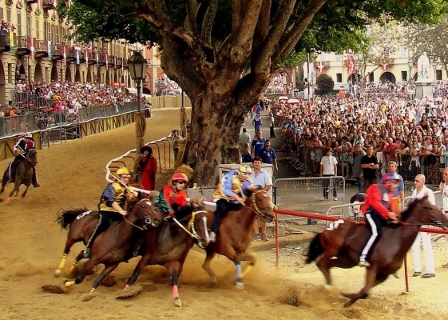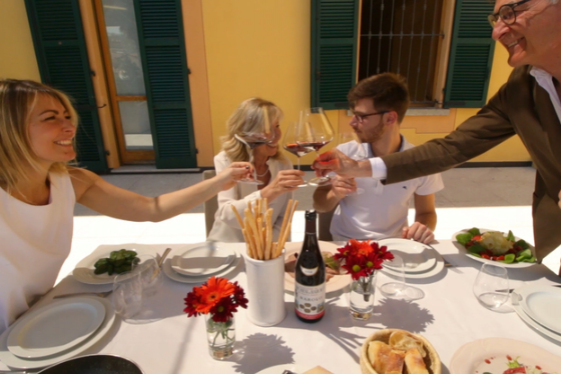

WTI Magazine #68 2015 September, 18
Author : folclore.it Translation by:
Every year on the third Sunday of September the "Palio (contest) di Asti" is run: the oldest in Italy, it is an ancient tradition from the eight century, a real festival, which has kept unchanged its distinctive traits, qualities that have helped to make it a unique performance. The charm of the medieval history lives through the town districts and its places, including churches, towers and palaces, untouched witnesses of when Asti was shining, for its richness and vitality, among the most important cities of Italy and Europe.
The Palio, a large velvet cloth with the insignia of Asti and the depiction of the patron saint San Secondo, is the dream and the award to which twenty-one contenders aspire.
The feast day begins with the blessing of horses and jockeys, and with a fascinating display of the flag-wavers, followed in the afternoon by the magnificent historical procession consisting of over 1200 characters who in their precious costumes, authentic jewels of artisan tailoring, recall facts and historical events that actually happened in Asti during the Middle Ages.
The historical parade of the Palio di Asti is a reminiscent picture that, for the fidelity of historical research, the care of the realization and the wealth of the contents, is probably unequaled both in Italy and in the world.
At the end of the Historic Procession begins the spirited race that ignites passion in the City of Asti, and for the twenty-one participants begins a sort of "terrible agony" that lasts for three heats and the final: seven horses for each heat, and nine for the final, with thousands of villagers who all hope in the miracle of victory.
You may be interested
-
'Fantastic' exchange thrills Italian doctor,...
Two doctors on opposite sides of the Atlantic Ocean have set up their own international ex...
-
'Italians always make you feel welcome - acco...
The Italian language has had more of an impact on me than anything else in my life so far....
-
'The Soul of Barolo' Wins Wine Spectator’s 20...
On a summer trip to Piedmont in Italy, Seattle-based filmmaker Will Miceli fell in love wi...
-
'Truffle tourism' worth 63 million euros in I...
Truffle fairs and truffle hunting tours have attracted some 120,000 visitors to Italy this...
-
‘Leave our granny alone!’ Family of 97-year-o...
Paolina Grassi, 97, is the sole inhabitant of an abandoned Alpine hamlet in northern Italy...
-
‘Music and the Cities’ podcast
"When the silence in the streets may seem deafening, music continues to dictate trends and...
-
‘The Mozart of fungi’: For ages, truffle hunt...
The prized Italian white truffle continues to shatter records. This precious fungus—nickna...
-
"Meraviglie - la penisola dei tesori": su RAI...
Al via la terza edizione di "Meraviglie - La penisola dei tesori", il seguitissimo program...










